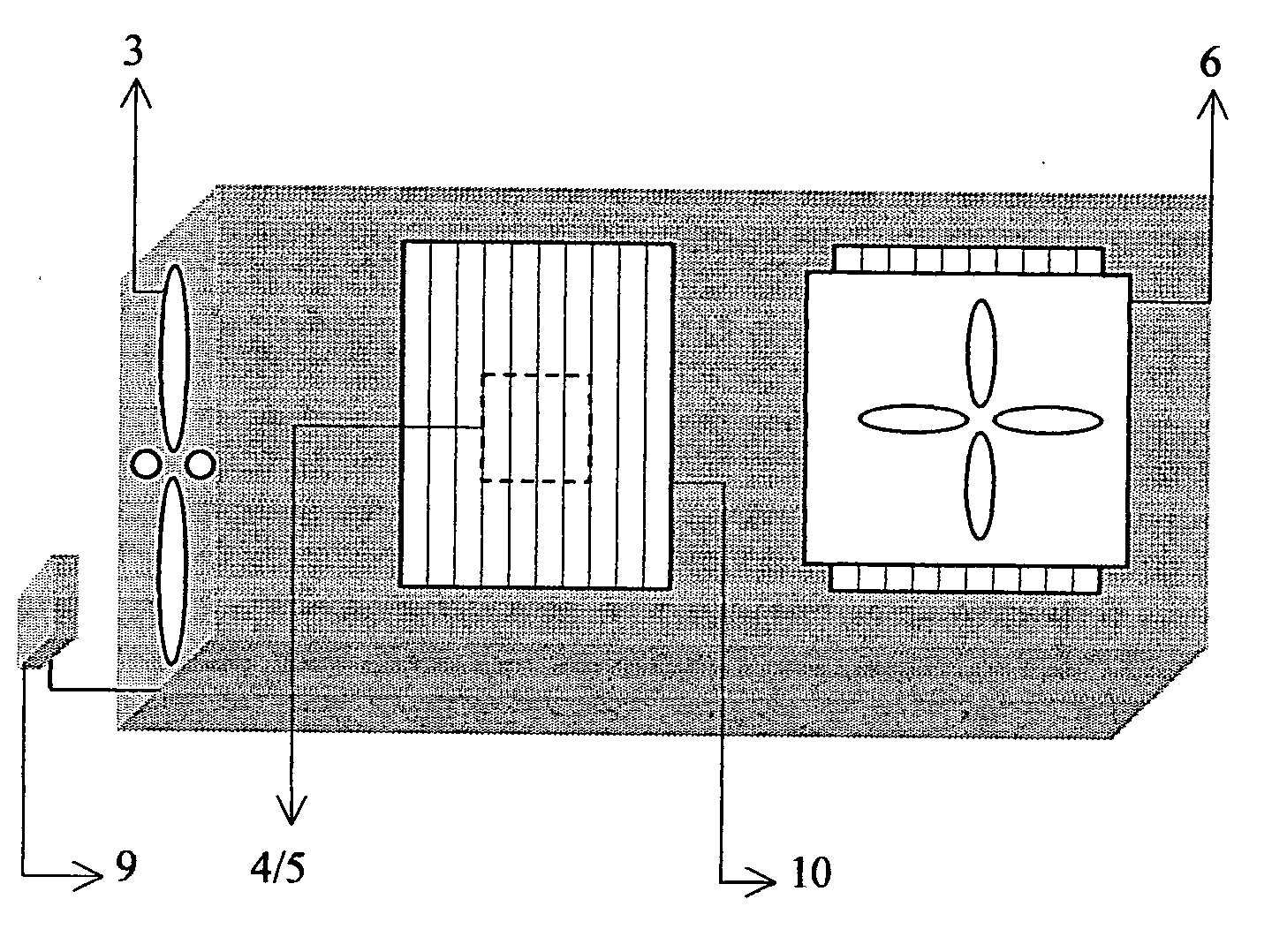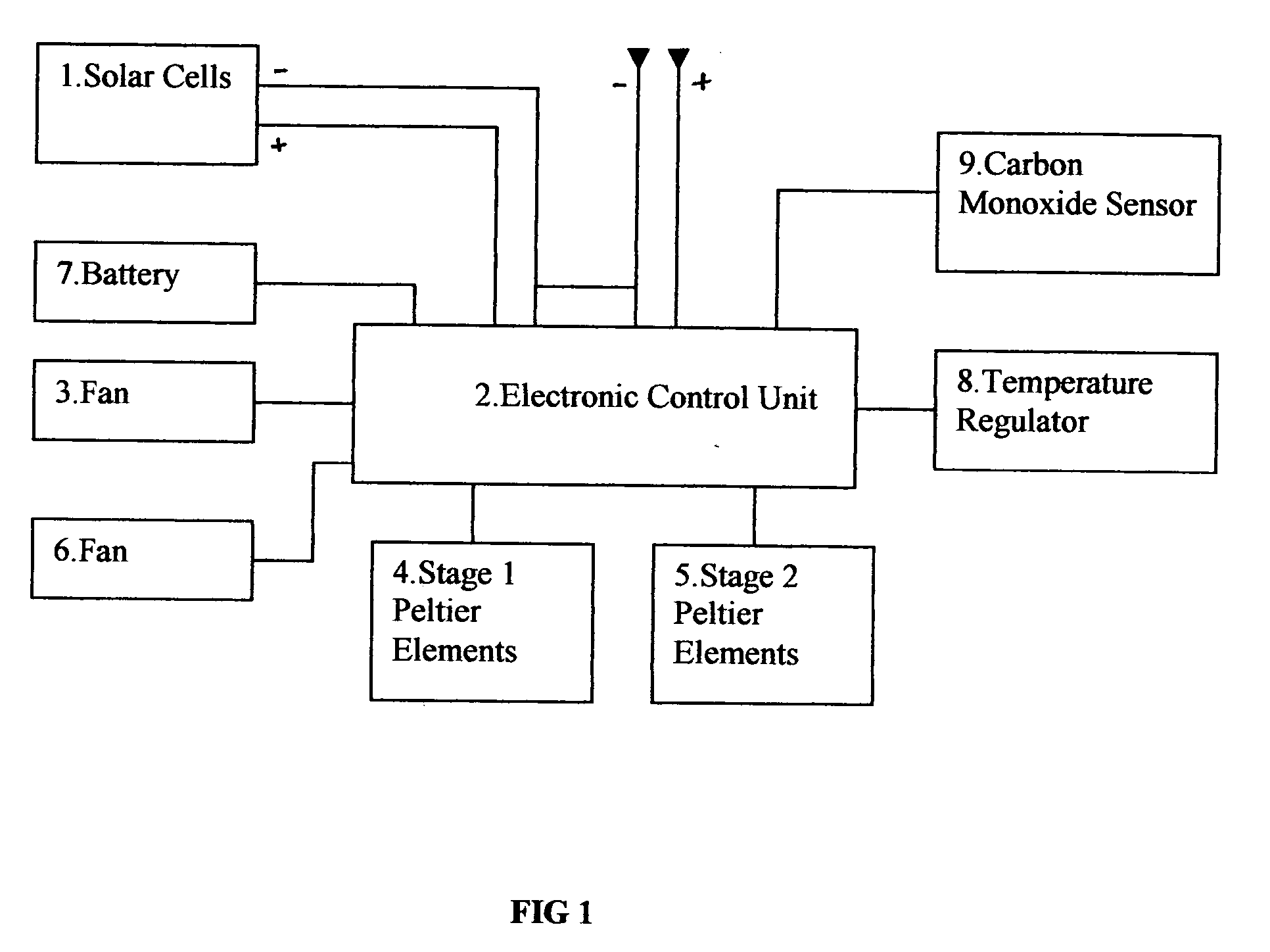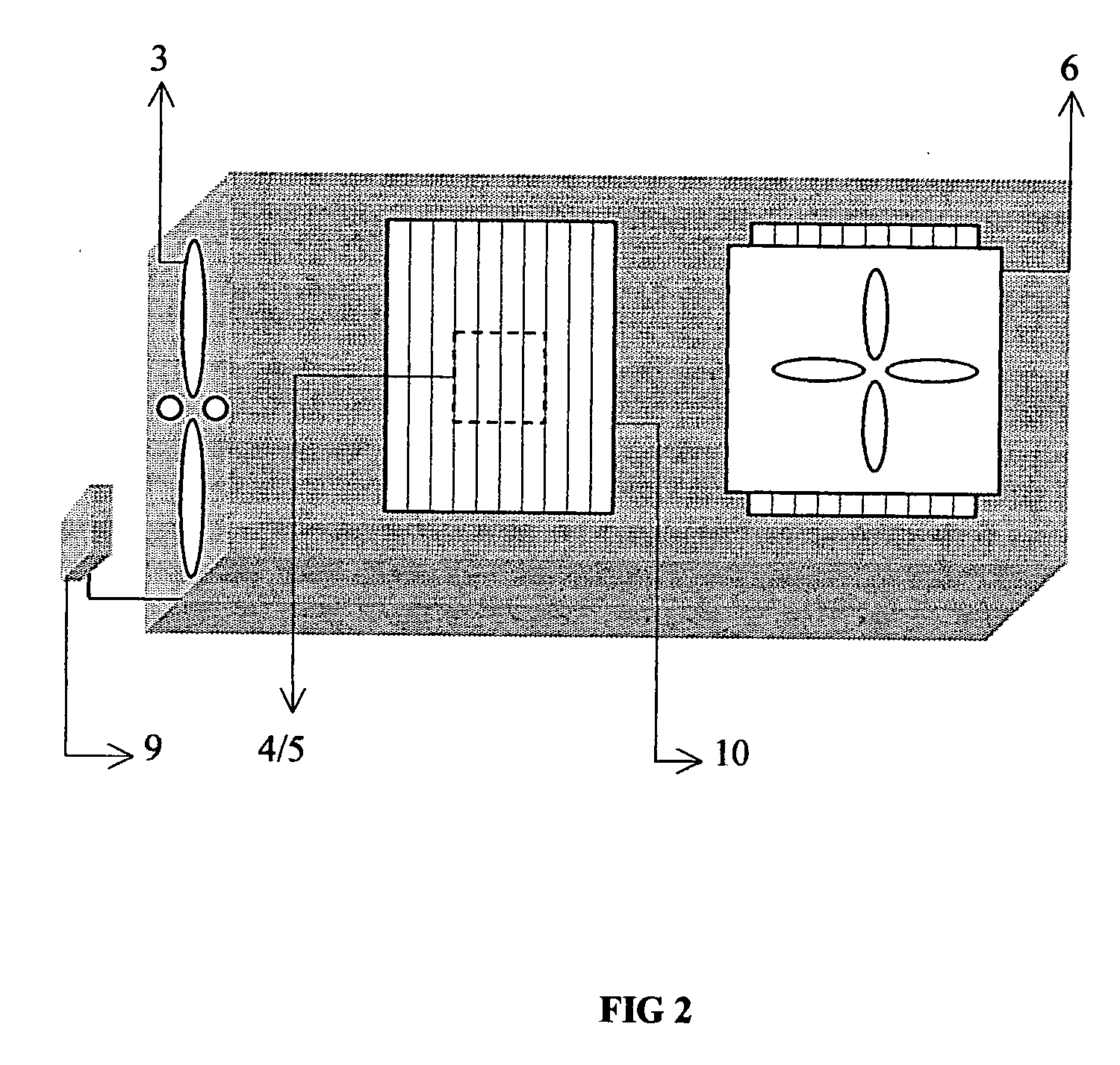Solar-powered temperature regulation system for the interior of an automobile/motor vehicle
- Summary
- Abstract
- Description
- Claims
- Application Information
AI Technical Summary
Benefits of technology
Problems solved by technology
Method used
Image
Examples
Embodiment Construction
[0020] In FIG. 1, the temperature regulation system is illustrated as a block diagram. In this specific case, it is comprised of solar cells, 1, connected to an electronic control unit, 2, which distributes the electricity coming from the solar cells to the various parts of the mechanical unit, i.e. the two types of fans, 3&6, and the stage one Peltier elements, 4, when the automobile is parked. A certain number of Peltier elements (for example, 2) works very well to lower the temperature, substantially below the outside temperature, of the interior of an automobile when it is parked. By using a reasonable number of solar cells, the power coming from them is sufficient to activate approximately 50% to 60% of the elements' capacity. When the number of Peltier elements is increased (for example, 4) and the automobile is switched on, the interior temperature of the automobile is significantly reduced. The electronic control unit withdraws the extra needed electricity from the battery, ...
PUM
 Login to View More
Login to View More Abstract
Description
Claims
Application Information
 Login to View More
Login to View More - R&D
- Intellectual Property
- Life Sciences
- Materials
- Tech Scout
- Unparalleled Data Quality
- Higher Quality Content
- 60% Fewer Hallucinations
Browse by: Latest US Patents, China's latest patents, Technical Efficacy Thesaurus, Application Domain, Technology Topic, Popular Technical Reports.
© 2025 PatSnap. All rights reserved.Legal|Privacy policy|Modern Slavery Act Transparency Statement|Sitemap|About US| Contact US: help@patsnap.com



